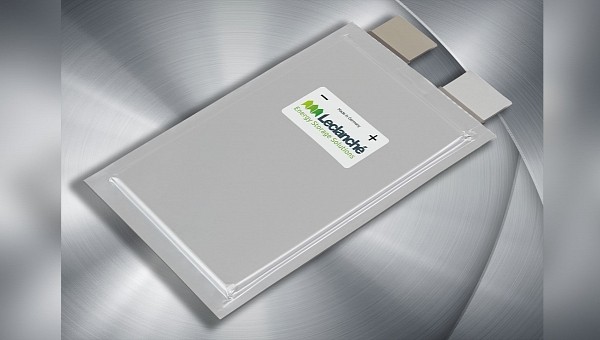As much as people worried about the environment love electric cars, cobalt is a component that makes them quiver. Its primary source is Congo, and there are pretty credible reports that kids are used to mining it in that country. It is also expensive. Leclanché managed to make cells that need less of this metal and still are 20% more energy dense.
The Swiss company named them G/NMCA. According to Leclanché, it managed to reduce the cobalt content in the cathode from 20% to 5% and increase the nickel content to around 90%. That is what makes the energy density higher than that of a similarly-sized ternary lithium-ion cell. NMCA is a quaternary compound: apart from nickel, manganese, and cobalt, it also uses aluminum. The battery maker states that the high energy density makes the new cell ideal for “electric cars and heavy-duty applications such as ships, buses, and trucks.”
Leclanché also announced that its electrodes do not use N-Methyl-2-pyrrolidone (NMP) as a solvent. This highly toxic organic substance is what most batteries have to use in their manufacturing process. It is listed among the Substances of Very High Concern due to the effects it can have on human health and the environment. This is the main reason for the European Commission to have restricted its use in the continent.
The battery maker managed to replace it with a “friendly water-based process” that still allows it to offer “a longer service life, high cycle stability, and good chargeability.” The company has been using aqueous binders in its production process for around 13 years, but it said that it has now mastered the technique. Using water in the process also helped Leclanché save between 10% and 30% in energy consumption in the manufacturing process.
As you may have guessed, that also makes carbon emissions in the making of batteries lower. EV detractors frequently try to say that makes electric cars more pollutant than combustion-engined competitors. That has been proven wrong several times: battery packs really make EVs emit more carbon in the making, but that is quickly compensated during the vehicles’ life cycle. Even when electricity is generated with coal, that will happen at around 30,000 km (a little more than 18,600 miles).
Although the new cathode may seem just a minor improvement in cells that are already under production, Leclanché said it would need one more year to make the new battery. In other words, we should only hear about it in electric cars by 2024. When they are ready, cell manufacturing will happen in Germany, more specifically in Willstätt, Baden-Württemberg. Battery modules will be made elsewhere: at the company’s headquarters in Yverdon, Switzerland. Leclanché should tell us when the first EV with its cells makes its debut next year.
Leclanché also announced that its electrodes do not use N-Methyl-2-pyrrolidone (NMP) as a solvent. This highly toxic organic substance is what most batteries have to use in their manufacturing process. It is listed among the Substances of Very High Concern due to the effects it can have on human health and the environment. This is the main reason for the European Commission to have restricted its use in the continent.
The battery maker managed to replace it with a “friendly water-based process” that still allows it to offer “a longer service life, high cycle stability, and good chargeability.” The company has been using aqueous binders in its production process for around 13 years, but it said that it has now mastered the technique. Using water in the process also helped Leclanché save between 10% and 30% in energy consumption in the manufacturing process.
As you may have guessed, that also makes carbon emissions in the making of batteries lower. EV detractors frequently try to say that makes electric cars more pollutant than combustion-engined competitors. That has been proven wrong several times: battery packs really make EVs emit more carbon in the making, but that is quickly compensated during the vehicles’ life cycle. Even when electricity is generated with coal, that will happen at around 30,000 km (a little more than 18,600 miles).
Although the new cathode may seem just a minor improvement in cells that are already under production, Leclanché said it would need one more year to make the new battery. In other words, we should only hear about it in electric cars by 2024. When they are ready, cell manufacturing will happen in Germany, more specifically in Willstätt, Baden-Württemberg. Battery modules will be made elsewhere: at the company’s headquarters in Yverdon, Switzerland. Leclanché should tell us when the first EV with its cells makes its debut next year.








